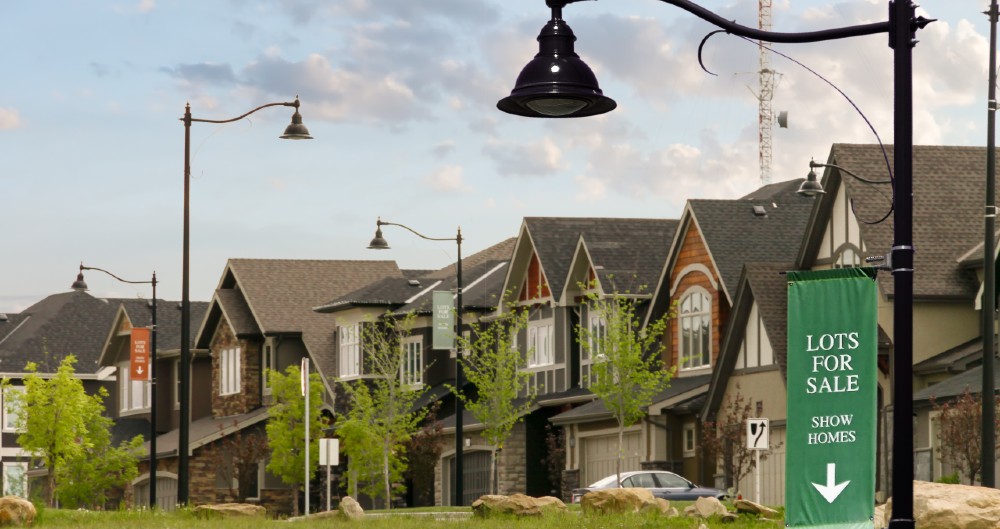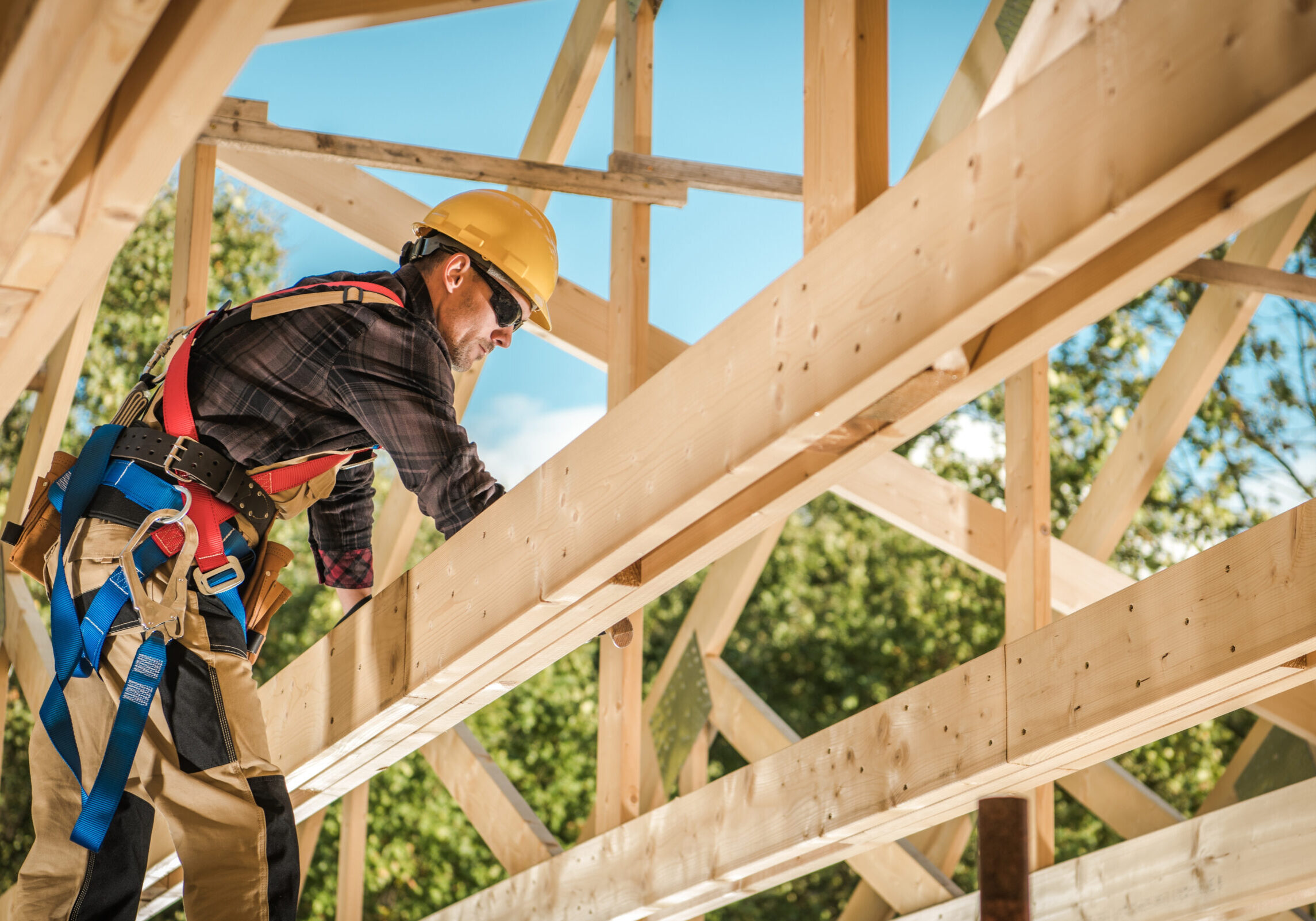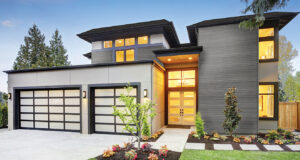Housing Figures: Rising Sales for New Homes and Existing Homes
August 26, 2021

Housing Figures is our monthly round-up of the top news stories related to residential new construction spending and the latest market numbers.
In our latest round-up, we look at how both sales for new homes and existing homes increased in their latest count, even as supply challenges continue to impact starts and confidence. We also catch up on what’s happening with the lumber market and how home builders have started to moderate on new home prices.
New and existing home sales rise
Sales for new homes increased 1% in July. New sales of single-family homes increased 1% in July to a seasonally adjusted annual rate of 708,000 units. That increase comes after three months of declines and represents a 27.2% decrease from July 2020 numbers, when sales rebounded from pandemic scares. The median sales price was $390,500 in July, while inventory increased to 367,000 units, many of which still need to be constructed. That represents a supply of 6.2 months. [Reuters]
Sales of existing homes also rose in July. According to the National Association of Realtors, existing home sales rose 2% from June, representing a seasonally adjusted annual rate of 5.99 million units. This is the second month in a row that existing home sales rose. Sales were 1.5% higher than July 2020. Rising supply is helping to draw more sales with the inventory of homes at 1.32 million by the end of July. That’s down 12% from 2020, but represents a smaller decline than previous months. [CNBC]
Builder confidence decreases, though is still positive
Higher materials costs and shortages bring down builder confidence. The latest NAHB/Wells Fargo Housing Market Index came in at 75 in August, down from a reading of 80 in July and representing the lowest reading in 13 months. Increased construction costs, supply issues and rising home prices were all factors in the lessened confidence, though any reading over 50 indicates more builders view conditions more favorably than not. [NAHB Now]
July housing starts impacted by shortages
Supply challenges also impacted housing starts in July. Supply challenges, in addition to labor challenges, also pushed July’s overall housing starts down 7% to a seasonally adjusted annual rate of 1.53 million units. Single-family starts decreased 4.5% (adjusted to 1.1 million units), while multifamily starts decreased 13.1% (adjusted to 423,000 units). The decline indicates builders are slowing construction as costs rise. Meanwhile, overall permits increased 2.6% to a seasonally adjusted annual rate of 1.64 million units. Though single-family permits declined 1.7%, multifamily permits rose 11.2% to a pace of 587,000. [NAHB Now]
Still, 2021 could be the best year for starts since 2006. Wells Fargo analysts are pointing out that home building remains remarkably strong despite supply shortages and other concerns. “Even with these challenges, the industry is on a pace to begin construction on close to 1.6 million homes this year, which would be the best year for housing starts since 2006.” [FX Street]
Not yet a HomeSphere partner?
HomeSphere connects residential construction builders with building product manufacturers to facilitate long-lasting relationships through our award-winning software platforms, My HomeSphere® and HomeSphere-IQ®.
Is the lumber market normalizing?
The Home Depot and Lowe’s say lumber is returning to normal. Leadership at retailers The Home Depot and Lowe’s say they’re seeing demand return as lumber prices decrease. "Supply and demand dynamics worked as expected,” Ted Decker, The Home Depot’s COO, said. Lumber prices have fallen by 73% to $456 per thousand board feet, a level seen in July 2020. [Fox Business]
A spotlight on multifamily
2020 saw a 30-year record for completed multifamily units. The 2020 Census Bureau’s Survey of Construction indicates that total multifamily units completed last year increased 6%, representing 375,000 units. That’s the largest annual count completed in 30 years. Broken down, 348,000 units were built for-rent, while 28,000 were built for-sale. [Eye On Housing]
Rent prices have increased beyond pre-pandemic projections. Zillow’s July 2021 Real Estate Market Report indicates that rent prices grew 9.2% year-over-year in July to $1,843 per month. These figures have exceeded their pre-pandemic projections, representing a milestone for multifamily recovery. Zillow estimates that July’s rent index was 2.9% higher than where it would’ve been had the past 18 months been more “normal.” [Zillow]
Housing affordability
Locals are getting priced out of up-and-coming markets. With work-from-home adding flexibility to where Americans can live, locals are finding that they’re getting priced out of their markets. Realtor.com pulled 10 hot spots where locals are least likely to be able to afford a home, including Santa Barbara, California, Gallatin County, Montana, Richmond County, Georgia, Jones County, Mississippi, and Jefferson County, Arkansas. [Realtor.com]
Builders taking a more cautious approach to pricing
Home builders reported more home pricing moderation. In our latest State of the Industry Report, compiled with BTIG, home builders reported that they’re taking a more cautious approach to pricing. Only 38% of respondents reported raising most or all base prices in July, which compares to 78% in June. Sales and traffic trends also softened modestly from June. [HomeSphere]






